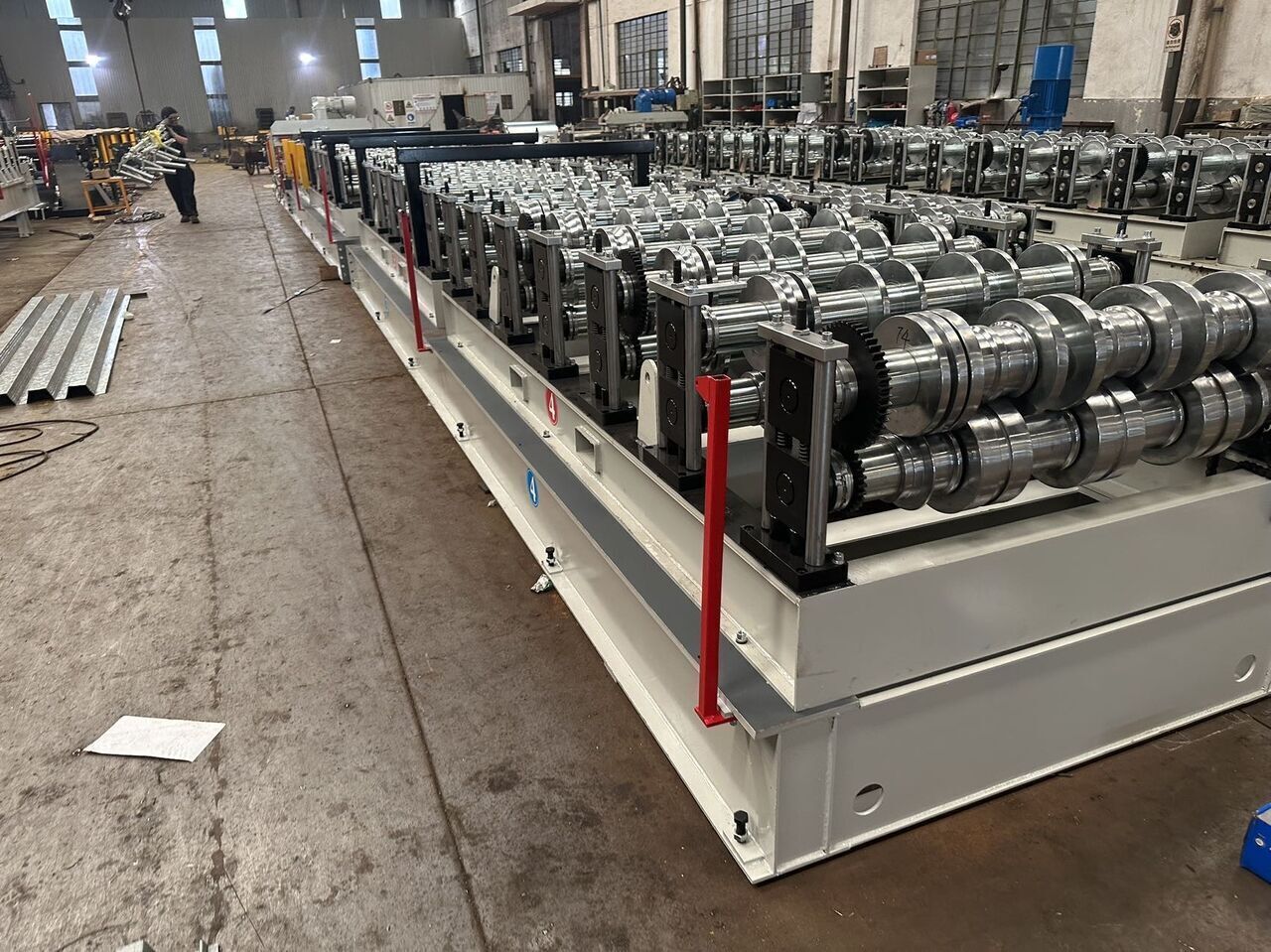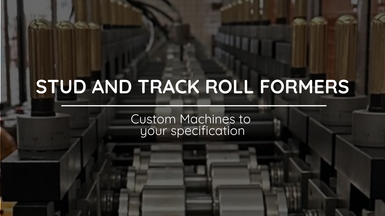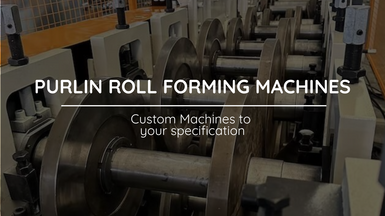
Composite Deck Roll Forming Machine
Here's how a Composite Deck Roll Forming Machine typically works:
Posted on Thursday, November 23, 2023
A Composite Deck Roll Forming Machine is a piece of equipment used in the construction industry to manufacture composite deck panels. Composite decks are popular for use in commercial and industrial buildings because they are durable, lightweight, and can support heavy loads. These decks typically consist of two main components: a metal deck and a concrete slab.
The roll forming process is a common method for manufacturing metal deck panels. In this process, a roll forming machine takes a coil of metal (usually steel) and shapes it into a desired profile by passing it through a series of rollers. The rollers gradually bend and shape the metal until it reaches the desired cross-sectional shape. For composite decks, the metal deck panel is typically formed with ribs or corrugations to provide structural strength and stiffness.
Here's how a Composite Deck Roll Forming Machine typically works:
- Material Feeding: A coil of metal is loaded onto the machine, and the leading edge of the metal sheet is fed into the roll forming machine.
- Roll Forming: The metal sheet passes through a series of rollers that gradually shape it into the desired profile. This may include forming the ribs or corrugations needed for structural support.
- Shearing: Once the metal sheet has been formed to the desired length, a shearing mechanism cuts it to the appropriate size.
- Stacking or Collecting: The finished metal deck panels are then stacked or collected for further processing or transportation to the construction site.
Composite deck panels are often used as the structural base for concrete floors in commercial and industrial buildings. After the metal deck panels are manufactured, concrete is poured over them to create a composite structure. This combination of steel and concrete provides the benefits of both materials, including high strength and fire resistance.
Composite Deck Roll Forming Machines come in various sizes and configurations to produce different types and sizes of composite deck panels. They can be customized to meet specific project requirements. These machines play a crucial role in the construction industry, as they allow for the efficient and cost-effective production of composite decks, which are widely used in modern building construction.
Composite Deck Profile
A composite deck profile, in the context of construction and building materials, refers to the specific cross-sectional shape or design of a composite deck panel. Composite decks are commonly used in commercial and industrial construction as a structural component for supporting concrete slabs or flooring. The profile of a composite deck panel is essential because it determines the panel's strength, stiffness, load-bearing capacity, and other performance characteristics. Here are some common composite deck profile types:
- Ribbed Profile: This is one of the most common composite deck profiles. It features a series of parallel ribs or corrugations that run along the length of the panel. These ribs provide structural strength and stiffness to the panel, allowing it to support heavy loads. Ribbed profiles also have good spanning capabilities, making them suitable for wide-span applications.
- Cellular Profile: Cellular composite deck profiles have a series of interconnected cells or voids formed within the panel's cross-section. These cells reduce the overall weight of the panel while maintaining its structural integrity. Cellular profiles are known for their lightweight design and are often used in applications where weight reduction is a priority.
- Form Deck Profile: Form deck profiles are designed with flat surfaces and minimal or no ribs. They are typically used as a temporary formwork for concrete slabs. The flat surface provides a smooth base for pouring concrete, and once the concrete has cured, it becomes an integral part of the composite structure.
- Acoustic Profile: Some composite deck profiles are designed to provide acoustic insulation properties. These profiles may have features such as perforations or additional layers to reduce sound transmission, making them suitable for applications where noise control is important.
- Interlocking Profile: Interlocking composite deck profiles are designed with a system that allows panels to interlock with each other. This feature provides enhanced stability and helps to create a more secure and uniform deck surface.
- Composite Deck with Embossments: Some composite deck profiles have embossed patterns or designs on their surface. These embossments can improve the bond between the concrete and the metal deck, providing additional structural performance.
The choice of composite deck profile depends on various factors, including the specific requirements of the building project, the intended load-bearing capacity, fire-resistance ratings, acoustic properties, and aesthetic preferences. Engineers and architects select the appropriate profile based on the project's needs and the performance characteristics of the composite deck panel.
Composite decks are typically made from galvanized steel or other metals and are combined with a concrete topping to create a strong and durable flooring system. The design and selection of the composite deck profile play a critical role in the overall performance and safety of the building structure.
All our machines are all due to variations in the customer's demand, and we are always ready to assist with any issues. All machines are assembled by our expert team in Orlando, Florida. We have been leading the Roll Forming Machine market since 2009, and have great expertise, so you will be in safe hands. For further information, contact our team here.
For more Machines, browse our extensive range here
Roll Forming Machines LLC's New Factory
Posted on Sunday, March 23, 2025
We have relocated factories, which will be available for tours very soon.

Uncoiler, Decoiler and Coil Car Roll Forming Machine Accesories from Roll Forming Machines LLC
Posted on Sunday, November 24, 2024
Contact us today with your specifications for a custom Uncoiler, Decoiler or Coil Car at [email protected] or call us at (+1) (407) 859 1119

Stud and Track Roll Forming Machines from Roll Forming Machines LLC
Posted on Saturday, November 23, 2024
Contact us today with your specifications for a custom Stud and Track Machine at [email protected] or call us at (+1) (407) 859 1119

Cee and Zee Purlin Roll Forming Machines from Roll Forming Machines LLC
Posted on Saturday, November 23, 2024
Contact us today with your specifications for a custom Cee and Zee Purlin Machine at [email protected] or call us at (+1) (407) 859 1119